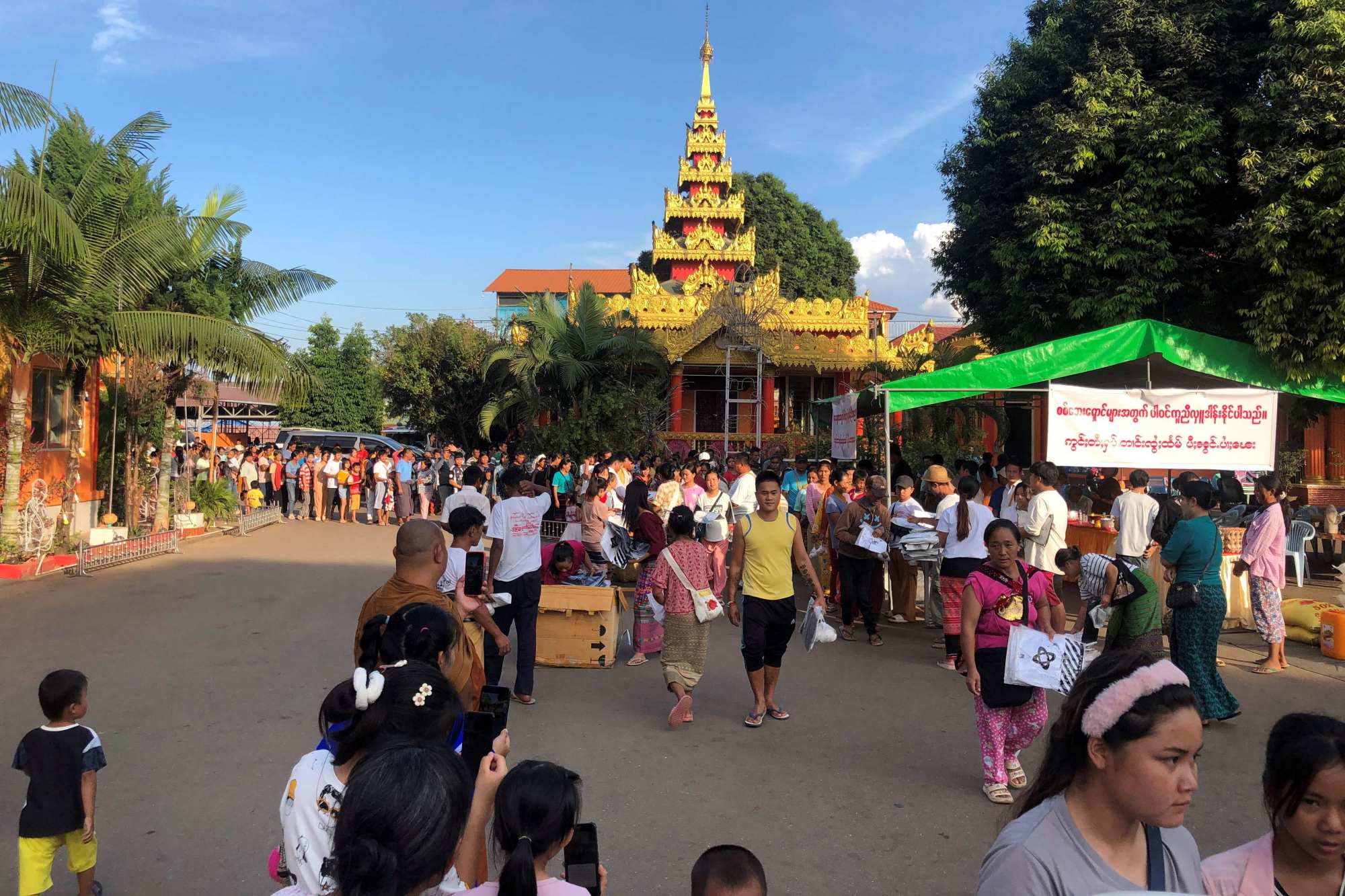India under pressure to engage with Myanmar junta, rebels amid refugee influx from border fighting
The junta lost control of some areas after rebels belonging mainly to the Chin National Front seized two military posts. India shares a 1,643km border with Myanmar, and is home to thousands of Myanmar refugees in different states.
According to United Nations estimates, India hosts over 74,600 refugees from Myanmar, with an estimated 54,100 arriving since the coup. About 5,000 had fled since the heavy fighting in western Chin state.
Pointing to the “unique resilience” of the resistance forces, Akash Sahu, an analyst in Indo-Pacific geopolitics and independent policy consultant, said the influx of refugees would continue and was likely to increase in the near future.
“It would be beneficial [for India] to have a working relationship with resistance forces along the border,” Sahu said, adding that border security would deteriorate as junta-controlled areas declined and the resistance took over more military outposts.
“It won’t be an exaggeration to say that the situation in Myanmar is blowing up, especially in the northern regions bordering India and China.”
Myanmar rebels, battling junta, seek to control border with India
Myanmar rebels, battling junta, seek to control border with India
While the crisis should “ideally bring together” New Delhi and Beijing to discuss Myanmar’s future, Sahu said neither appeared willing to engage each other on the subject as they “also compete for influence in Myanmar”.
Swaran Singh, a visiting professor at the University of British Columbia, said India’s approach thus far had been to engage the junta but with the aim of reviving democracy in Myanmar.
India is in “close communication” with the National League for Democracy – the political party founded by democracy icon Aung San Suu Kyi and toppled by the junta.
“India is likely to continue with this balanced approach of engaging all parties while hoping for an early end to the crisis followed by revival of democracy,” Singh added.

Disruptions in trading routes
Over at the Myanmar-China border, the vital Muse-Lashio-Mandalay trade route is said to have closed since “Operation 1027”, the joint military operation conducted by the Three Brotherhood Alliance on October 27.
The alliance is a military coalition made up of three ethnic armed groups: the Arakan, the Myanmar National Democratic Alliance Army (MNDAA), and the Ta’ang National Liberation Army.
Border trade between China and Myanmar is said to have ground to a halt in northern Shan State during the last two weeks, and “not a single container truck has passed by”, according to Muse residents who spoke to AFP.
Could Myanmar’s military be deposed by armed groups fighting across the country?
Could Myanmar’s military be deposed by armed groups fighting across the country?
International Crisis Group’s senior Myanmar adviser Richard Horsey said the overland Myanmar-China trade went mainly through two border towns, Muse and Chinshwehaw, but both road links were currently cut.
While it was possible to divert “a very small amount of trade” to other border crossings, Horsey said these were not set up to handle large volumes.
“It’s possible that this could be a long-term disruption to China-Myanmar border trade,” Horsey said, adding that trade resumption was in the interests of China and the Alliance.
Htwe Htwe Thein, an associate professor at Australia’s Curtin University who specialises in business and economic development in Myanmar, said disruption of the trade routes meant the junta could not collect taxes, and increased hardship for the local population already suffering from a shortage of goods, unemployment and “lack of safety and security”.
Horsey said China did not appear to be taking action to halt the MNDAA offensive, despite pressuring the junta to stop the border fighting.
“My reading of this is that Beijing is warning the regime not to come to the aid of the Kokang border guard force or try to prevent the MNDAA from taking back control of the Kokang self-administered zone,” Horsey said.
The Alliance’s recent operation is said to align with China’s interest in cracking down on transnational crime in the region, especially cybercriminals who target Chinese nationals.
On October 20, more than 100 Chinese and other foreign nationals at a scam compound controlled by the border guard force at Shiyuanzi, Kokang were killed by the force as they attempted to flee.
“This was the last straw for China, which opted to sit back and watch” as the Alliance launched Operation 1027 aimed at “eliminating the scam compounds and the military dictatorship in the same blow”, said Jason Tower, Myanmar programme director for the United States Institute of Peace think tank.

The offensive has forced the junta to begin dismantling its border guard force, resulting in the release of thousands of Chinese cyber-slaves over the past three weeks, Tower noted.
“This experience should make it clear to the Chinese that only maximum pressure that brings the Myanmar army and Min Aung Hlaing to their knees will be effective in terms of addressing the multifaceted problems that Myanmar now faces,” Tower said.
Beijing’s involvement with Myanmar actors has systematically excluded the National Unity Government made up of ousted parliamentarians and other ethnic armed groups based in the Thai and India border areas, Tower noted.
China, India and Thailand should leverage the opportunity to dramatically deepen engagement with all the anti-junta forces in the country, Tower said, adding that “only by doing so will they be able to work towards identifying a viable pathway towards stability”.


 Play with Welcome Bonus Up to 300%
Play with Welcome Bonus Up to 300%